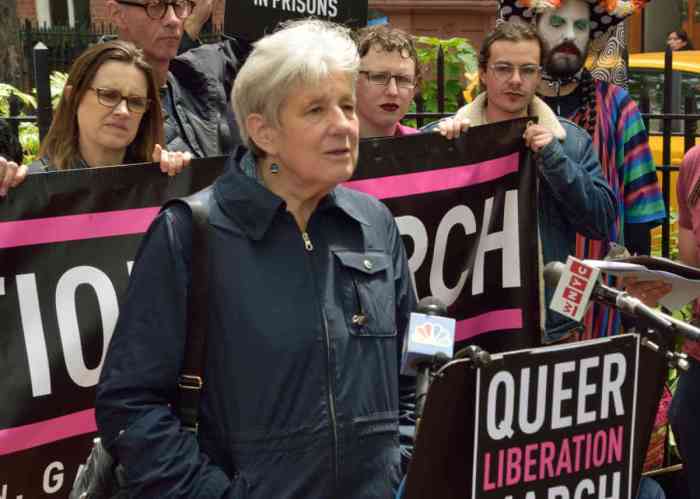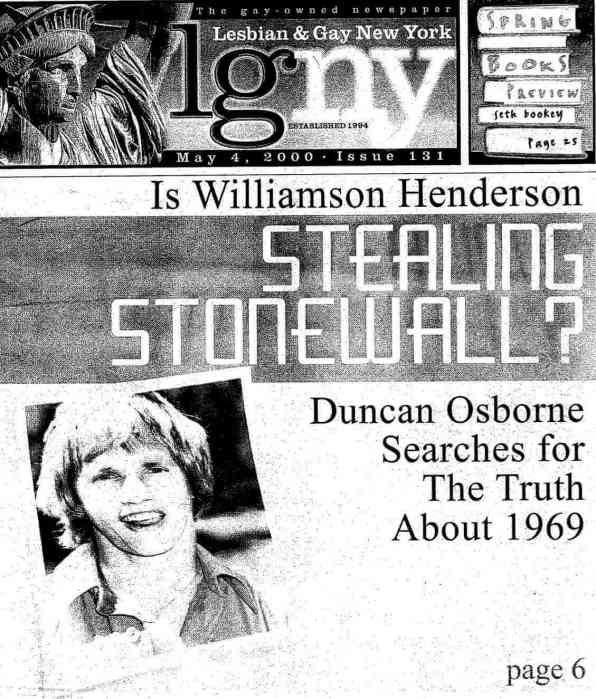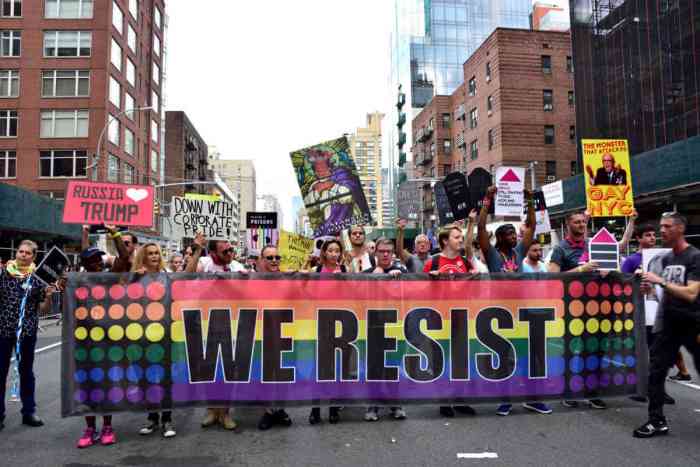An NYPD surveillance photo of the Gay Liberation Front at the 1970 Pride March, the first commemorating the 1969 Stonewall riots. | NEW YORK CITY MUNICIPAL ARCHIVES
As activists were gathering in the West Village in 1970 for the first march to commemorate the 1969 Stonewall riots that mark the start of the modern LGBTQ rights movement, they were not alone. The NYPD was nearby surreptitiously taking pictures and film of New York City’s first Pride March.
Some of those pictures and film are now part of a small, but still fascinating exhibit titled “Unlikely Historians: Materials collected by NYPD surveillance teams, 1960-1975” that the city’s Department of Records and Information Services has produced at the city’s Municipal Archives on Chambers Street in Manhattan.
“I think the exhibit shows the array of protests in the city and across the country in a very, very tumultuous period,” said Pauline Toole, the commissioner of the records department.
Municipal Archives chronicle police spying on wide array of groups since 1897
The Archives now have 750 cubic feet of police department records that show the department’s “Italian’s squad,” which was shorthand for anarchists, spying on suspects in 1904 and additional spying on a host of other groups over decades. The squad eventually became the Bureau of Special Services and Investigations and then the Special Services Division, which the exhibit describes as the “most prolific” surveillance unit in the NYPD. A display of mug shots, which includes some from outside the city and the state, suggests the NYPD was cooperating with the FBI and police in other jurisdictions.
The police surveillance unit also collected a flyer for an early gay computer dating service. | NEW YORK CITY MUNICIPAL ARCHIVES
The police department’s photo unit contributed 250 cubic feet, with pictures taken from 1897 to 1975. The remaining 500 cubic feet were released under a long-running federal lawsuit that both limited the NYPD’s spying and required it to release records of that spying.
In its more than a century of surveillance, the NYPD has spied on immigrants, labor leaders, Nazis, communists, the Black Panthers, the Nation of Islam, civil rights leaders Malcolm X and Martin Luther King, and some early LGBTQ rights groups. The records on the LGBTQ groups are a small, but significant part of the collection.
The LGBTQ “ephemera” that police collected and are part of the exhibit include a Mattachine Society button reading “Go-Go Mattachine” and an ad for the Man-To-Man “cruise by gay computer” service that promises that subscribers will meet “14 new people a month for one year.” The “space age computer service” advertised in a Mattachine publication.
Police took at least 30 photos and film at that first Pride March, which occurred on June 28, 1970. A picture of members of the Gay Liberation Front (GLF) at that march is also featured in the exhibit.
The exhibit has video of several protests organized by the Gay Activists Alliance (GAA) in the ‘70s, including two in 1973. One protest was in support of a piece of city legislation called Intro 475 that would have banned discrimination in employment based on sexual orientation. The police grow violent in one protest video.
A gay film festival caught the NYPD’s attention. | NEW YORK CITY MUNICIPAL ARCHIVES
“It had a very, very hard time getting out of a City Council committee,” said Perry Brass, an author and GLF founder, who attended a hearing on the legislation. “Basically what they were talking about was was there real discrimination against homosexuals in New York City.”
Thomas Cuite, who represented parts of Brooklyn in the City Council, was the majority leader in that body from 1969 to 1985. He refused to allow a floor vote on any legislation banning discrimination based on sexual orientation. Legislation adding sexual orientation as a protected class to the city human rights law was enacted in 1986 after Cuite left the Council.
“Cuite would not allow this to get out,” Brass said, who had not heard of the exhibit when contacted by Gay City News.
A second video appears to be at the Inner Circle Dinner, an annual charity fundraiser produced by a New York City press association. Another video shows a GAA sit-in in 1971.
“I’m very happy,” Brass said. “There is so little documentation from that period so this is documentation.”
The films of the LGBTQ protests are just a part of a far larger amount of footage that the records department possesses.
“We have 490 films,” Toole said. “It’s an amazing trove that we’ll have to get funding to digitize.”
UNLIKELY HISTORIANS: Materials collected by NYPD surveillance teams, 1960-1975 | New York City Municipal Archives, 31 Chambers St. at Centre St., Room 109 — First Floor Gallery | Through Feb. 28: Mon.-Wed., Fri, 9 a.m.-4:30 p.m.; Thu., 9 a.m.-7 p.m. | nyc.gov/html/records/html/events/events.shtml
The NYPD also took note of a nude film festival. | NEW YORK CITY MUNICIPAL ARCHIVES







































